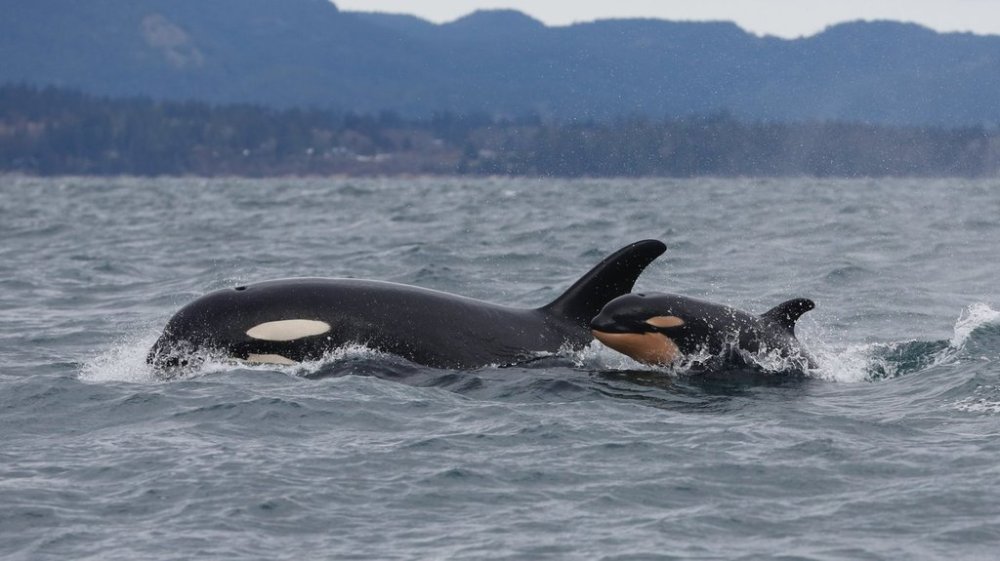Science
Southern Resident Killer Whales Face Slow Decline Amid Urgent Need for Action

The latest survey of the endangered Southern Resident killer whales indicates a troubling trend towards their potential disappearance. According to Michael Weiss, a director with the Center for Whale Research, the population remains stable yet faces a gradual decline without more robust protective measures. This assessment highlights the urgent need for action to address the factors threatening these iconic marine mammals.
The survey, released on October 13, 2025, reflects the population count as of July 1, showing a total of 74 whales, an increase of just one from the previous year. During this period, researchers noted four births across the three distinct pods of Southern Resident killer whales, though only two calves survived. The declining numbers are compounded by the disappearance of K26, an adult male known for his reproductive success, marking a significant loss for the population.
Weiss attributes the decline in the Southern Resident killer whale population to several factors, including the decrease in chinook salmon, pollution, and noise from maritime traffic in their habitat off the coasts of Washington State and British Columbia. He remarked, “We’re not talking about southern residents going extinct in the next five years, but we are talking about a fairly good chance of at least one of the (three) pods being gone within the next 50 years.”
Challenges Facing the Southern Residents
The survey’s findings underline a concerning pattern of genetic inbreeding among the Southern Resident killer whales, exacerbating their vulnerability. Weiss noted, “The population is very inbred, very low genetic diversity, which is probably causing some issues for survival and resilience towards disease.” Of the 27 males of reproductive age, only a few are actively breeding, with a prime reproductive age for males considered to be in their early twenties. Currently, just 12 males are at least 20 years old.
In contrast to their northern counterparts, the Southern Resident females are reproducing at approximately half the rate, and calf mortality rates are alarmingly high, with about 50 percent of calves not surviving their first year. The K pod is in particularly dire straits, with only 14 members, the lowest number recorded in the survey’s 50-year history. Weiss highlights that “What’s really concerning about K pod is they’re just not reproducing,” noting that the last successful birth occurred in 2022.
The situation for the Southern Resident killer whales is further complicated by their reliance on a specific salmon species, the chinook, which has been declining in availability. Weiss explained that Southern Residents often have the “last crack” at these salmon as they migrate from northern waters to rivers along the Pacific coast.
Proposed Solutions and Future Outlook
To improve the chances of survival for these whales, Weiss emphasizes the need for long-term efforts to restore chinook habitat, particularly freshwater spawning grounds. Adjusting fishing practices to prevent overfishing of chinook during critical migration periods is also vital. He stated, “If you’re fishing out in the ocean where everything’s mixed up, it’s really hard to avoid taking fish from these declining populations.”
The urbanization of their habitat poses additional challenges, as the whales hunt in areas heavily trafficked by cruise ships and freighters. Weiss poignantly described their struggle as “trying to find food on a highway,” underscoring the need for immediate action to reduce noise pollution and habitat disruption.
The findings of the latest survey serve as a stark reminder of the precarious state of the Southern Resident killer whales. Without significant intervention and restoration efforts, their future remains uncertain. The community of conservationists and policymakers must prioritize these measures to ensure the survival of this iconic species.
-

 Lifestyle1 month ago
Lifestyle1 month agoWinnipeg Celebrates Culinary Creativity During Le Burger Week 2025
-

 Health2 months ago
Health2 months agoMontreal’s Groupe Marcelle Leads Canadian Cosmetic Industry Growth
-

 Science2 months ago
Science2 months agoMicrosoft Confirms U.S. Law Overrules Canadian Data Sovereignty
-

 Education2 months ago
Education2 months agoRed River College Launches New Programs to Address Industry Needs
-

 Technology2 months ago
Technology2 months agoDragon Ball: Sparking! Zero Launching on Switch and Switch 2 This November
-

 Science2 months ago
Science2 months agoTech Innovator Amandipp Singh Transforms Hiring for Disabled
-

 Technology5 days ago
Technology5 days agoDiscord Faces Serious Security Breach Affecting Millions
-

 Technology2 months ago
Technology2 months agoGoogle Pixel 10 Pro Fold Specs Unveiled Ahead of Launch
-

 Science2 months ago
Science2 months agoChina’s Wukong Spacesuit Sets New Standard for AI in Space
-

 Technology2 months ago
Technology2 months agoWorld of Warcraft Players Buzz Over 19-Quest Bee Challenge
-

 Business2 months ago
Business2 months agoDawson City Residents Rally Around Buy Canadian Movement
-

 Technology7 days ago
Technology7 days agoHuawei MatePad 12X Redefines Tablet Experience for Professionals
-

 Business2 months ago
Business2 months agoNew Estimates Reveal ChatGPT-5 Energy Use Could Soar
-

 Science2 months ago
Science2 months agoXi Labs Innovates with New AI Operating System Set for 2025 Launch
-

 Education2 months ago
Education2 months agoAlberta Teachers’ Strike: Potential Impacts on Students and Families
-

 Technology2 months ago
Technology2 months agoInnovative 140W GaN Travel Adapter Combines Power and Convenience
-

 Technology2 months ago
Technology2 months agoFuture Entertainment Launches DDoD with Gameplay Trailer Showcase
-

 Technology2 months ago
Technology2 months agoGlobal Launch of Ragnarok M: Classic Set for September 3, 2025
-

 Technology2 months ago
Technology2 months agoNew IDR01 Smart Ring Offers Advanced Sports Tracking for $169
-

 Technology2 months ago
Technology2 months agoArsanesia Unveils Smith’s Chronicles with Steam Page and Trailer
-

 Science2 months ago
Science2 months agoNew Precision Approach to Treating Depression Tailors Care to Patients
-

 Technology2 months ago
Technology2 months agoHumanoid Robots Compete in Hilarious Debut Games in Beijing
-

 Business2 months ago
Business2 months agoBNA Brewing to Open New Bowling Alley in Downtown Penticton
-

 Health2 months ago
Health2 months agoGiant Boba and Unique Treats Take Center Stage at Ottawa’s Newest Bubble Tea Shop









